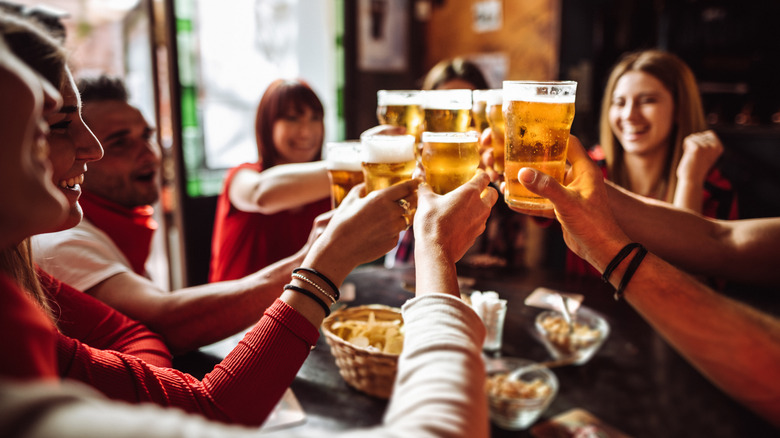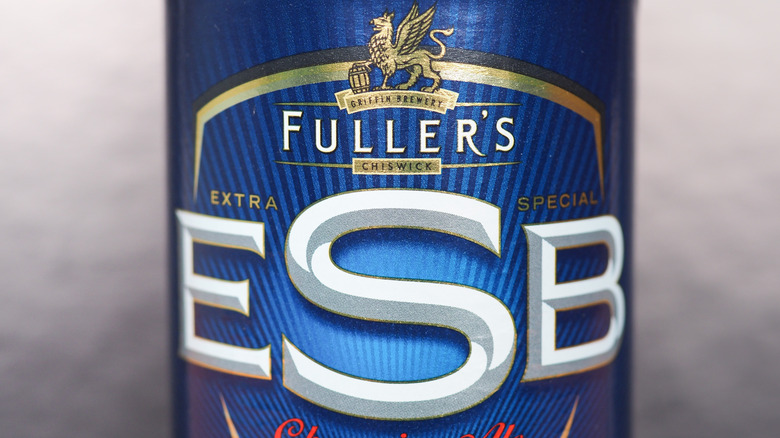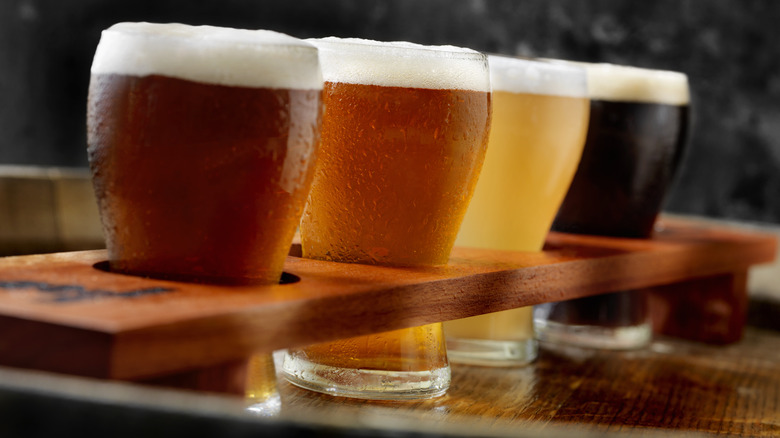ESBs Are The Slept-On Brews Of The Craft Beer World
Craft beer aficionados seem to be well-versed in IPAs, but ESBs are a little more mysterious. Standing for extra special bitter, ESB is a style of pale ale that originated in England. The brew offers a nice alternative to IPAs in both potency and flavor. While IPAs typically range from 5% to 7% alcohol by volume, ESBs usually clock in somewhere between 4.5% to 5.5% ABV. The lower ABV makes ESBs more favorable when it comes to sessionability, which means that several beers can be consumed in one sitting without risking substantial inebriation.
As for flavor, ESBs are not nearly as bitter as their name would suggest. These brews are a lot less bitter than most IPAs on the market but still offer a rich, malt-forward flavor that makes an impact on the palate. While ESBs are not quite as popular as other craft beers, particularly within the U.S., they're gaining a devoted following among discerning beer drinkers, one that's been steadily growing since their inception decades ago.
Where did ESB originate?
ESBs have roots in traditional English bitters, a style of beer that has been captivating beer lovers in England since the 17th century. In addition to the English malts used to brew the beer, the original bitters got their notable flavor from the mineral-heavy water used during the brewing process at that time. Their popularity increased over the years as beer lovers strayed away from the darker-style ales. Over time, traditional bitters evolved into three separate categories: Ordinary, best, and extra special.
Most beer connoisseurs credit Fuller's brewery with creating the ESB that's known and loved today. The London-based brewery already offered versions of ordinary and special bitters when they added the extra special type in 1971. Fuller's ESB recipe proved to be quite popular and eventually influenced other breweries to create their versions of the beer. These days, ESBs reside within the wide selection of flavorful craft brews, which includes many iterations of IPAs, sours, lagers, and much more.
How do ESBs differ from IPAs and other beers?
India pale ale, more commonly referred to as IPA, is a wildly popular style of beer known for its intensely hoppy flavor. These hops are what give IPAs their characteristic bitterness, which is accompanied by a substantial ABV. When compared to ESBs, IPAs turn up the bitterness. And while lots of beer drinkers enjoy those qualities in their brews, ESBs are generally considered cleaner and more easy-drinking.
As mentioned, ESB is a style of pale ale and is known for being pleasantly hoppy but also malty and sweet. Compared to blond ale, which also falls under the pale ale category, they are more flavorful. Blond ales are so mild that they don't have any discernable malt or hop flavor, are lighter in color, and typically come in between 4.1% and 5.1% ABV. ESB is a wonderfully session-able style of beer for those who enjoy a moderate amount of body and flavor and want to be able to drink a few in one sitting. If you're wondering where to get one locally, there are plenty of stellar craft breweries throughout the U.S.


